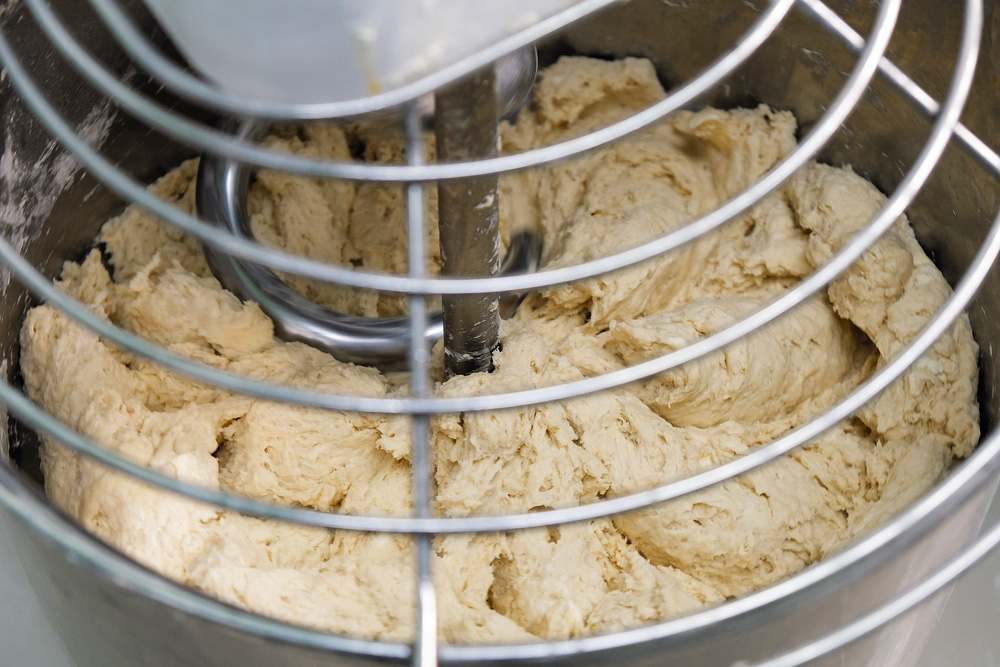Trouble Shooting Dough
Controlling the Temperature
By Domenico Tolomeo
Why is pizza dough so inconsistent?
“I’m doing a cold ferment, but my dough is blowing up overnight in the cooler/refrigerator? Why?”

Use a thermometer to check the temperature of your dough after mixing.
“How do I control my final dough temperature while mixing?”
- Take your desired dough temperature (e.g., 65°F) and multiply it by 3 (accounting for room temperature, flour temperature, and mixer friction).
- Subtract the room temperature, flour temperature, and mixer friction from this number. (You can obtain your mixers friction rating by calling the manufacturer.)
- Subtract the room temperature, flour temperature, and mixer friction from this number. (You can obtain your mixers friction rating by calling the manufacturer.)
65 x 3 = 195 – 70 – 69 – 9 = 47°F (Desired Water Temperature)
It is important to remember that different mixers have different friction factors; planetary mixers will have a friction rating of 20F-22F while spiral mixers will have a friction rating of 8F-10F. If you are using a diving arm mixer, your friction factor is even less around 5F-7F.

The type of mixer that you use plays a key role in controlling dough temperature.
“How do I reach my desired water temperature?”
- Pre-chill the water: Weigh out your water the day before and place it in the fridge. On the day of mixing, remove it from the cooler and leave it at room temperature until it reaches your desired temperature.
- Add ice: Fill a container with water and gradually add ice until you have reached your desired temperature. Weigh it out, and you are ready to mix.
- Use a water meter with a built-in chiller: This method is the most convenient and consistent. You can set the exact amount of water you need and the temperature, then pour it right into the bowl, reducing user error.

Chilling water with ice is a simple method to reach your desired water temperature.
While these are some of the most frequently asked questions about dough consistency, many other variables can affect your dough. Factors like yeast quantity, yeast types, mixing procedures, altitude, and humidity also play significant roles. Stay tuned for more articles that will help you perfect your dough!


